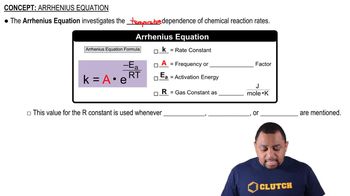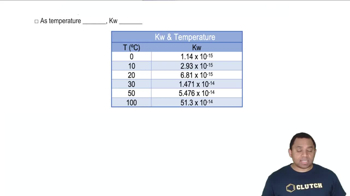Here are the essential concepts you must grasp in order to answer the question correctly.
Activation Energy
Activation energy is the minimum energy required for a chemical reaction to occur. It represents the energy barrier that reactants must overcome to transform into products. In the context of the souring of milk, a higher activation energy indicates that the reaction proceeds more slowly at lower temperatures, which is why souring takes longer in the refrigerator.
Recommended video:
Arrhenius Equation
The Arrhenius equation relates the rate of a chemical reaction to temperature and activation energy. It is expressed as k = A * e^(-Ea/RT), where k is the rate constant, A is the pre-exponential factor, Ea is the activation energy, R is the gas constant, and T is the temperature in Kelvin. This equation helps in estimating activation energy by comparing reaction rates at different temperatures.
Recommended video:
Temperature Dependence of Reaction Rates
The rate of chemical reactions typically increases with temperature due to the increased kinetic energy of molecules, which leads to more frequent and effective collisions. This principle is crucial for understanding why raw milk sours faster at higher temperatures, as the increased thermal energy facilitates the reaction that causes souring.
Recommended video:
Kw Temperature Dependence




